One of the most popular travel destinations in Europe, Amsterdam is a compact, charming and cosmopolitan city that invites exploration. Known as the “Venice of the North” for its more than 100 canals, the capital of the Netherlands offers easy sight-seeing adventures by foot, bike and boat. Amsterdam’s well-preserved and appealing 17th-century architecture provides a quaint if incongruous backdrop for a city famous for its modern, progressive attitudes. From the city’s fine art museums to its colorful flower markets, from cannabis-selling “coffeeshops” to the red light district, there’s something exciting and unique to discover in Amsterdam at every turn.
10Koninklijk Paleis Amsterdam
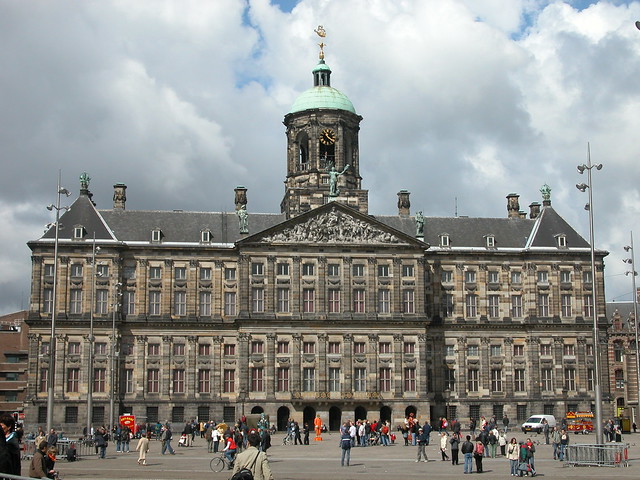 flickr/Robert Scarth
flickr/Robert Scarth
One of three royal palaces in the Netherlands, the Koninklijk Paleis in Amsterdam is located on the western side of Dam Square in the center of the city. The 17th structure began life as the city’s town hall, but was converted into a palace during the Napoleonic Wars when Napoleon’s brother Louis was crowned King Louis I of Holland. Although the exterior was constructed by Jacob van Campen with sandstone to mimic the public buildings of Rome, the interior is a premier example of the elaborate Empire style of the early 1800s. The palace is still used by the Dutch Royal House for Royal events but is open to the public for most of the year.
9De Wallen
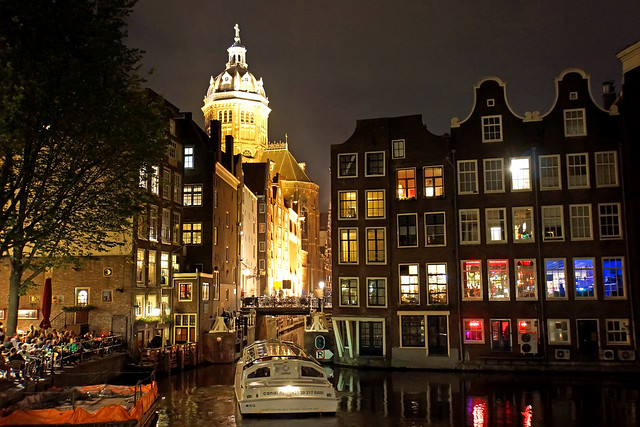 flickr/archer10 (Dennis)
flickr/archer10 (Dennis)
De Wallen is Amsterdam’s infamous red-light district, the city’s designated area for legalized prostitution. The neighborhood covers several canals and side streets to the south of Central Station. More than one hundred one-room apartments are rented by sex workers who entice onlookers from behind windows illuminated with red lights. A strong police presence keeps the neighborhood safe. Although taking pictures is not allowed, visitors are welcome. As the oldest section in Amsterdam, the district is also home to several historic buildings, including the city’s oldest church, the Gothic-style Oude Kerk.
8Scheepvaartmuseum
 flickr/Peter Krasznai
flickr/Peter Krasznai
Artifacts from Amsterdam’s rich nautical history are housed within the Scheepvaartmuseum, or National Maritime Museum. Formerly a naval storehouse constructed in 1656, the museum features 18 rooms of exhibits and artifacts. Sea trade made Amsterdam the world’s wealthiest city during the 1600s, and this multi-story museum demonstrates how the Dutch dominated the seas with exhibits that range from depictions of historical sea battles to artfully drawn maps and 17th-century weapons. The museum’s collection of carvings also gives visitors an up-close look at how sailors passed their time while at sea. Moored outside the museum is a replica of the Amsterdam, an 18th-century ship which sailed between the Netherlands and the East Indies.
7Vondelpark
 flickr/Bj
flickr/Bj
Named Nieuwe Park when it opened in 1865, Vondelpark is located in the Oud-Zuid, or Old South district of Amsterdam to the west of the city’s Museum Square. The park earned its current name after a statue of the Joost van den Vondel was placed in the park in 1867. Designed and crafted by sculptor Louis Royer, the statue of the famous 17th-century Dutch poet and playwright became such a familiar landmark that people began to call the park Vondelpark. The park serves as a popular gathering spot for locals and tourists. It’s a place where people can relax, play sports on the grass, bike along pathways and enjoy a herring sandwich or Dutch beer at one of the park’s horeca facilities.
6Bloemenmarkt
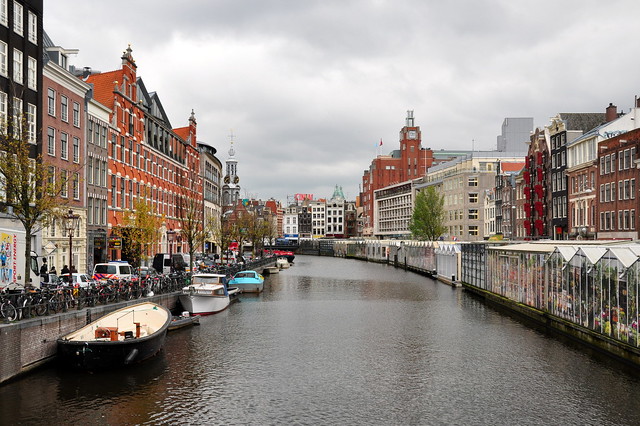 flickr/A L B
flickr/A L B
Located between Muntplein and Koningsplein on the south bank of the Singel canal, the Bloemenmarkt is the world’s only floating flower market. Seven days a weeks, flower sellers load stands and floating barges with all of the flowers and bulbs for which the Netherlands is famous. Founded in 1862, the Bloemenmarkt includes more than a dozen different florists and garden shops as well as souvenir stalls. Although locals shop here too, the market is primarily designed to cater to tourists. The bulbs offered for sale have been designated as ready for export, so visitors can purchase tulip, daffodil, narcissus and other bulbs as a lasting memento of their trip to Amsterdam.
5Anne Frank House
 flickr/liddybits
flickr/liddybits
Amsterdam’s most visited attraction, the Anne Frank Huis is situated along the Prinsengracht canal. The structure that once hid Anne Frank, her family and four other Jewish people from the Nazi authorities during World War II has been viewed as a memorial to the Holocaust since 1947, when Anne’s father published the diary that Anne wrote while they lived hidden within the building. A plan to preserve the building was hatched in 1955 when developers were planning to demolish the structure. The building opened as a museum in 1960. Visitors can view the rooms where Anne lived as well as exhibits that chronicle her all-too-short life.
4Begijnhof
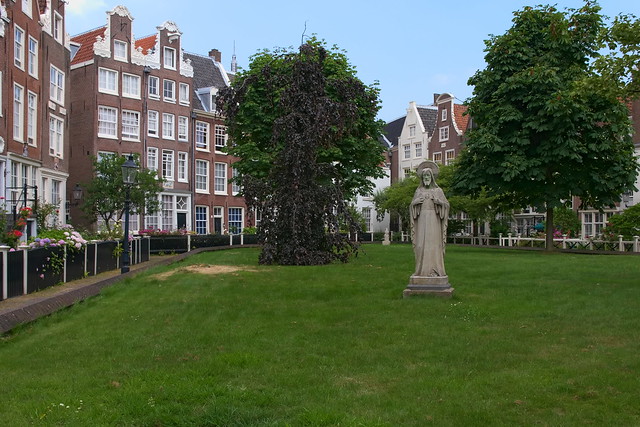 flickr/XisPics
flickr/XisPics
The district of Begijnhof, or Beguines Courtyard, occupies the center circle of land in Amsterdam’s circular canal system. In the 14th century, the area was an enclosed courtyard that served as a residence for the sisterhood of Catholic Beguines. The Begijnhof wasn’t a convent in the traditional sense because the women were free to leave the order if they chose to marry. When the sisterhood’s chapel was confiscated during the Reformation, they began to worship secretly at the Begijnhof Kapel, a charming structure fitted with marble columns and stained-glass windows. Begijnhof is also home to the English Reformed Church, built around 1392. The city’s oldest preserved wooden house, which dates from around 1465, is located within the Begijnhof as well.
3Van Gogh Museum
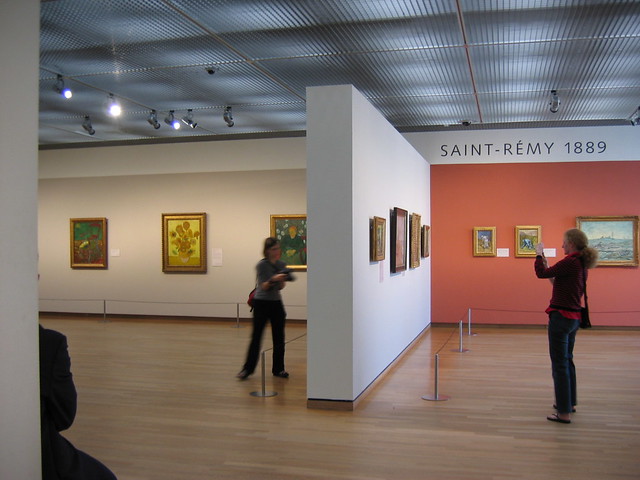 flickr/Minke Wagenaar
flickr/Minke Wagenaar
Located on the northwestern side of the Museum Square, or Museumplein, the Van Gogh Museum is home to the world’s largest collection of the artist’s paintings and letters. Housed in a four-story building designed by Gerrit Rietveld in the 1970s, the museum is one of the most visited tourist attractions in Amsterdam. Two hundred paintings from the Dutch Post-Impressionist occupy the second story of the museum. Displayed chronologically, the artwork offers viewers an intimate look at Van Gogh’s evolving style. The third story contains information about the artist’s troubled life and about the efforts taken to restore his paintings. Works by Van Gogh’s contemporaries, including artists like Millet, Gaugin and Daubigny are exhibited on the top floor.
2Rijksmuseum
 flickr/sainz
flickr/sainz
Occupying the northeastern section of the Museum Square, the Rijksmuseum is arguably the most important of the nation’s arts and history museums. The total collection numbers more than one million artifacts dating from the 13th century onward. For decades, the collection was housed in buildings all over the country until 1876, when the architect Pierre Cuypers won a design contest and the construction of the Rijksmuseum began. Opened in 1885, the museum currently has around 8,000 objects on display, the most famous of which are paintings by Rembrandt, Frans Hals and Johannes Vemeer. Rembrandt’s masterpiece Night Watch is worth the price of admission alone.
1Canals of Amsterdam
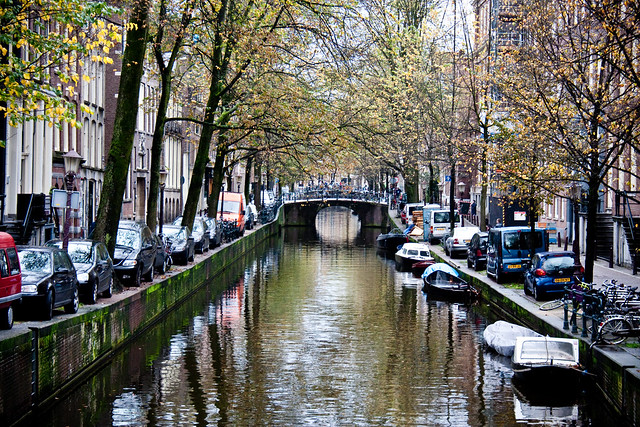 flickr/andreasdantz
flickr/andreasdantz
The famous canals were built during the 17th century to control the flow of the Amstel River and to add acres of dry land to the city. Amsterdam’s wealthy merchants soon discovered that the canals were ideal for showcasing their mansions as well. A boat ride along one of the city’s 100 canals offers visitors a relaxing way to view traditional Dutch architecture. Lined with elm and lime trees and crossed over by more than a thousand bridges, the canals are home to some 2,000 houseboats, including houseboat hotels. Tour operators offer a variety of cruises, ranging from hour-long excursions to candlelight cruises.
- See more at: http://www.touropia.com/top-tourist-attractions-in-amsterdam/#sthash.pdCQlRZb.dpuf
No comments:
Post a Comment